
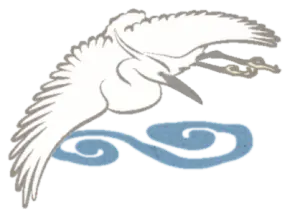


-
Dōgo Onsen Honkan+
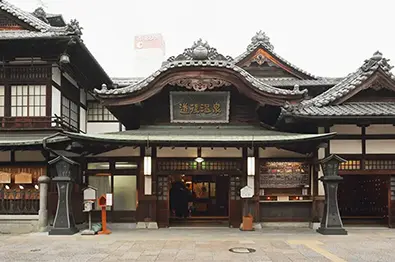
-
Asuka-no-Yu+
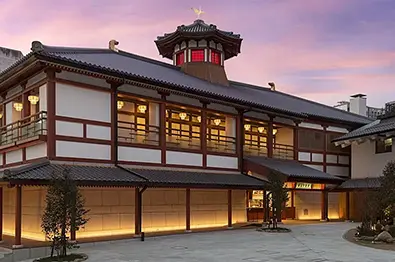
-
Tsubaki-no-Yu+

The Individual Rooms
Dogo Onsen Front Page > Yushinden > The Individual Rooms
A Space of Opulence and Refinement
Onarimon
As the entrance to the bathhouse, which is dedicated for imperial use, it opens solely for imperial visits. The roof features a three-tiered construction with, from the lowest upward, a noki-karahafu (gable with undulating curves applied at the eaves), chidori-hafu (triangular “plover”-type gable with slightly concave curvature) and mukuri-hafu (gable with slightly convex curvature). Seals engraved in the decorative oni-gawara ridge-end tiles with a dragon head indicate that they were remade in 1969 in the course of conservation repair work.
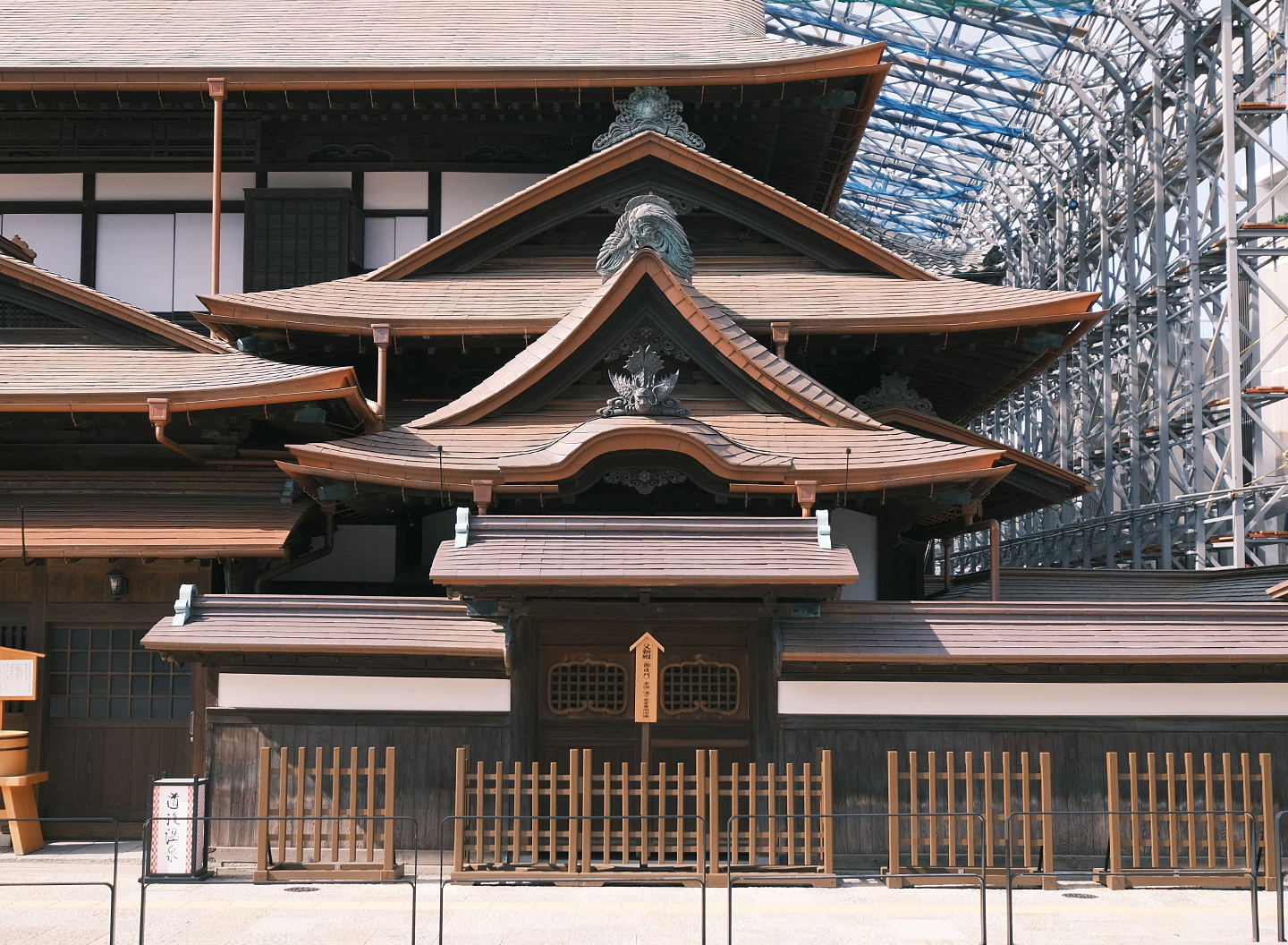

Gyokuza-no-Ma
A room for the exclusive use of the emperor. The space is adorned with paintings of hōō phoenixes, chrysanthemums and kiri (paulownia) branches on gold leaf. With gold leaf applied to the kamo-i header of sliding doors in the toko-waki space adjacent to the tokonoma alcove, and single boards of Kasuga-sugi (Japanese cedar from the vicinity of the Kasuga-taisha Grand Shrine in Nara) used for the tokonoma floor and of jindai-sugi (lignitized Japanese cedar) for the toko-waki floor, the room features lavish and ornate decorative design.
Oima
Atop tatami mats with special, colorfully patterned ungen-beri cloth edging, items including a te-aburi brazier made of Tobe-yaki ware for hand-warming and a sweets container are prepared. The barrier paintings of the room depict Japanese grosbeaks and hawfinches on gold leaf. Considered to have been the work of painter ABE Sessai of Dogo-yunomachi.
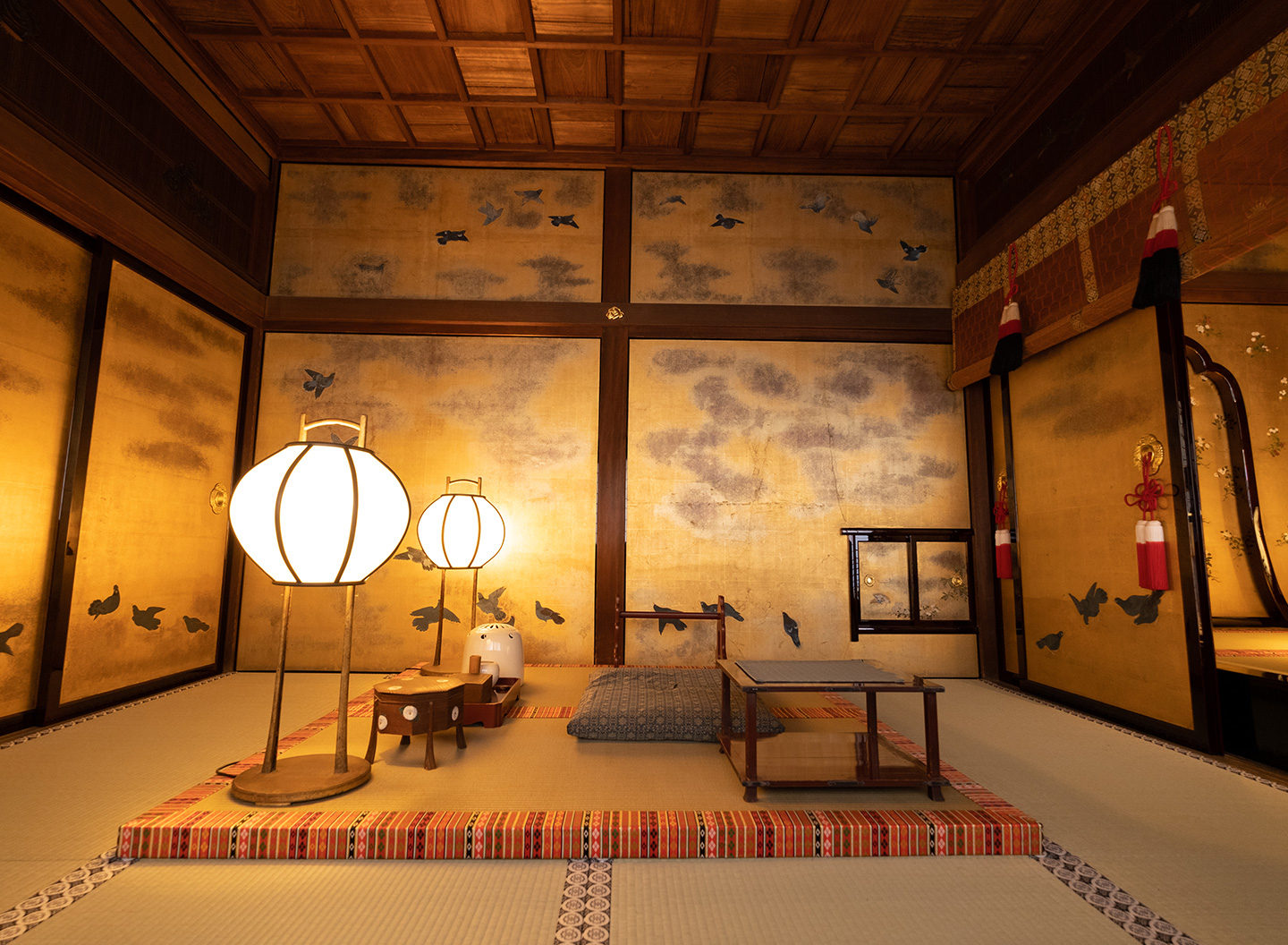

Oyudono
The yugama hot water receptacle, made of a fine granite called Aji-ishi, features a carved image of Okuninushi-no-Mikoto (“Master of the Great Land,” a kami deity of central importance associated with magic and medicine), viewed from the front, and Sukuna-Hikona-no-Mikoto (“Little Lord of Renown,” a kami deity of healing and sake-brewing associated with onsen) from the right. Featured on its hoju (round, ornamental finial piece) are relief carvings of four characters in the handwriting of Prince Yoshiaki, who was known as Komatsu-no-Miya, saying, “Kenpo moto no gotoshi” (“[The waters of Dogo Onsen,] restorative of a healthy stride”).
Hora-no-Ma
Originally called Go-Kyusoku-no-Ma when the space was first constructed. With only deteriorated silver leaf reapplied, walls were resurfaced with traditional shikkui plaster made of slaked lime and other natural materials including sand, seaweed and plant fibers. The hora-doko (hollowed alcove) was adorned with a hanging scroll featuring a chrysanthemum painting by MORI Kinseki, a painter in the Japanese style.
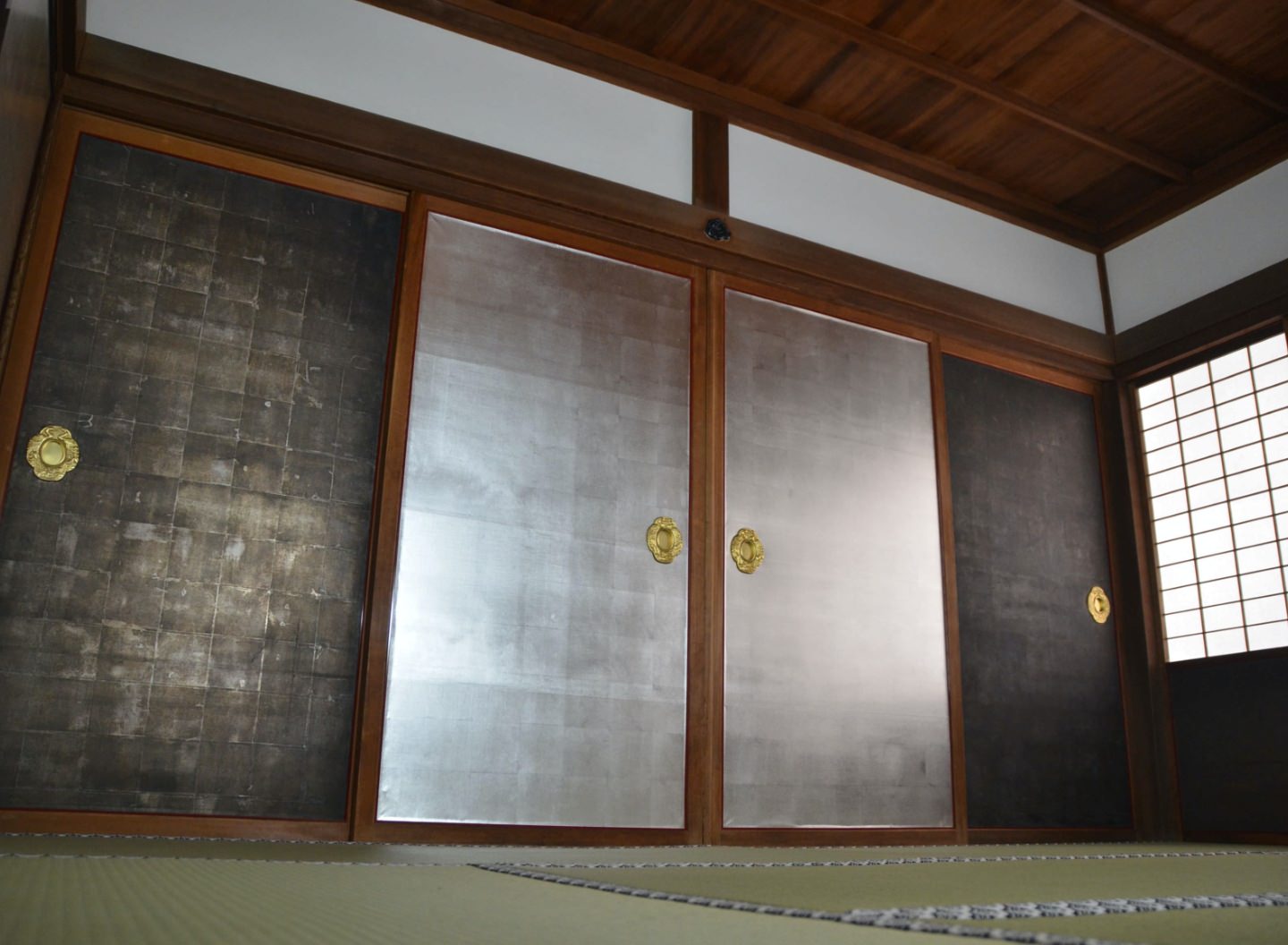
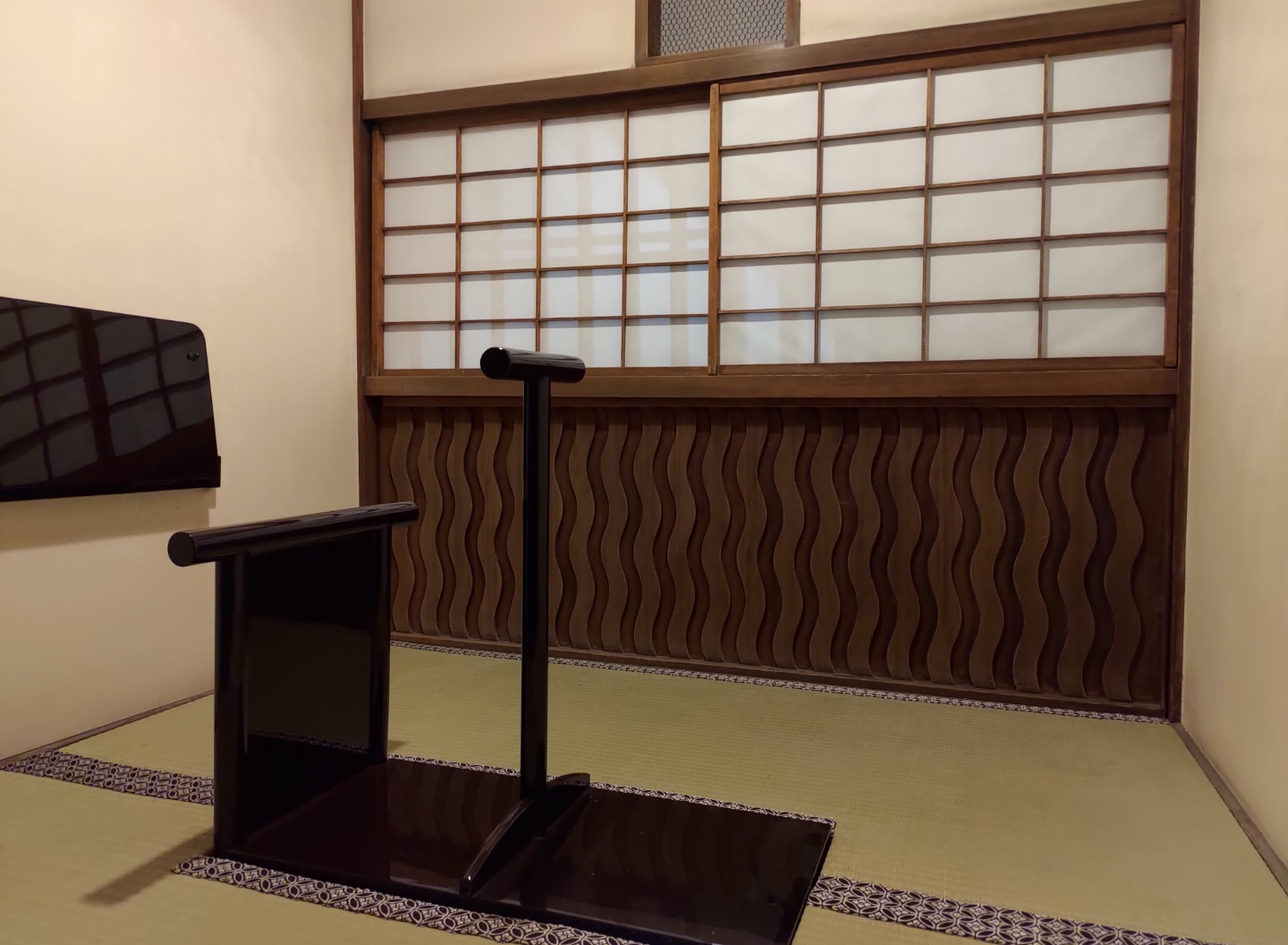
Okawaya
A traditional Japanese-style lavatory featuring a lacquer coating, a rarity among those dedicated for imperial use. While the Yushinden has been host to visits by many members of the imperial household to date, who enjoyed bathing in the onsen, there remains to be a single use of this priceless lavatory.








